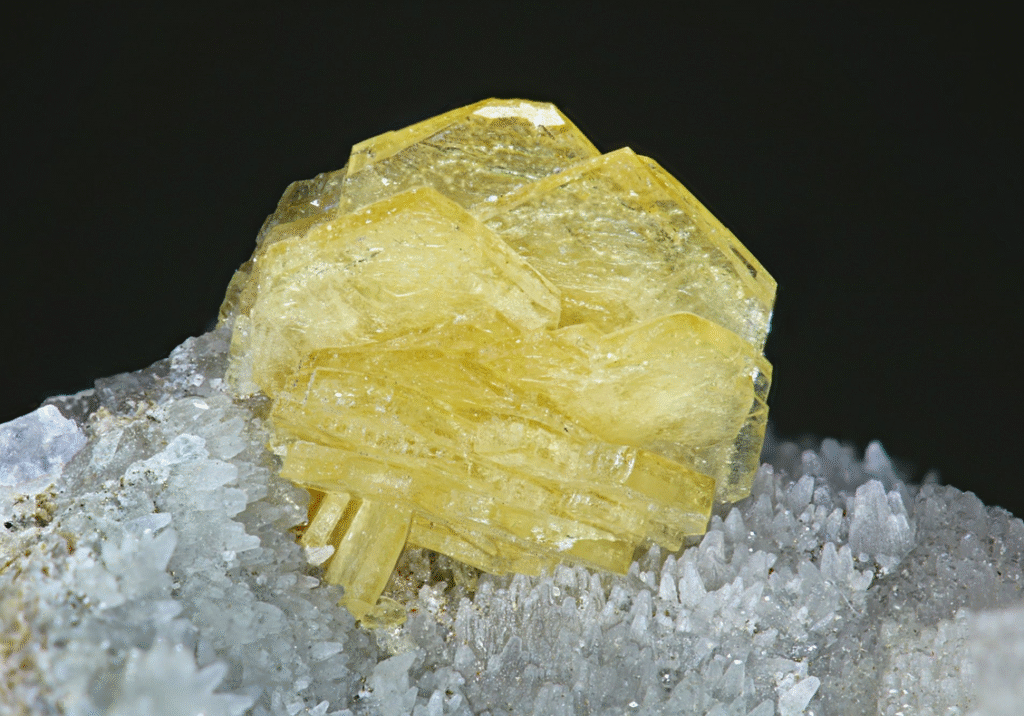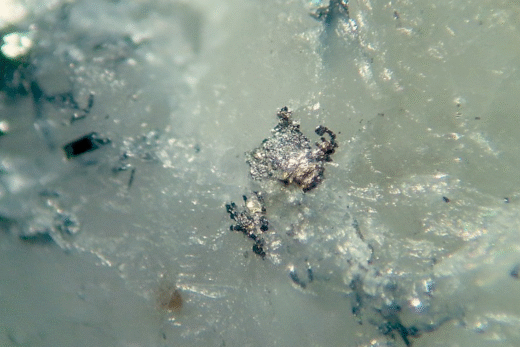Ba(SO4)
Barite, or baryte, is a common mineral that occurs in a range of geological environments including septarian nodules, basalts, base metal deposits (especially copper), and sedimentary deposits. It is a dense and heavy mineral and is most commonly colourless or white, but also may be grey, yellow, orange, brown, green or rarely blue. Barite can occur as blocky, bladed or prismatic translucent or transparent crystals, or massive and granular.
Selected Australian Occurrences:
- As small veins of brown barite at Paddy’s River Copper Mine, Australian Capital Territory.
- As bladed rosettes of yellow crystals, as blue-green crystals, or as colourless or white bladed crystals from Broken Hill, New South Wales.
- As golden crystals with copper inclusions from Mount Isa, Queensland.
- As golden crystals at Aldgate, Mount Lofty Ranges, South Australia.
- As opaque barite roses at Hallett Cove, Mount Lofty Ranges, South Australia.
- As crystals in a range of colours from Kapunda, South Australia.
- As prismatic transparent colourless crystals at the Moralana Barite Mine, Flinders Ranges, South Australia.
- As large dark-coloured blocky crystals from Olympic Dam, South Australia.
- As brown well-formed crystals from the Oraparinna Mine, South Australia.
- As tabular colourless to white crystals at the Henty Mine, Tasmania.
- As golden prismatic crystals from the Rosebery Mine, Tasmania.
- With inclusions of mercury minerals at Harford, Tasmania.
- As white bladed crystals at a number of basalt localities in Victoria.
- As blue crystals and nodules at Heathcote and Rochester, Victoria.
- And many other localities around the country.




